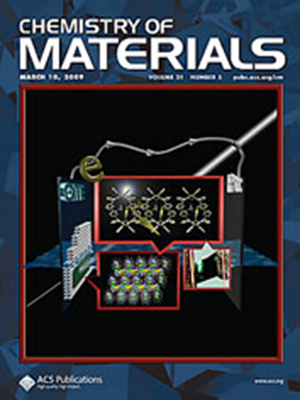Optimized Surface Strain in L10-Type Pt0.8Ga0.2Co Intermetallic Catalyst for Enhanced Oxygen Reduction in Fuel Cells
IF 7.2
2区 材料科学
Q2 CHEMISTRY, PHYSICAL
引用次数: 0
Abstract
Tuning surface strain has been proven to be an efficient strategy for improving the kinetics of the oxygen reduction reaction of Pt–M electrocatalysts (M = non-noble metals). However, it remains a grand challenge to achieve optimal compressive strain, particularly on a platform of low-Pt nanocrystals. Herein, we report a novel approach involving the partial substitution of a Pt site with Ga, resulting in the development of a high-performance L10-type Pt0.8Ga0.2Co intermetallic catalyst. The incorporation of Ga not only fine-tunes the surface strain to approach the optimum region of the theoretical volcano plot but also facilitates the formation of a more stable intermetallic structure dynamically. This enhancement significantly improves long-term electrochemical durability. Pt0.8Ga0.2Co/C exhibits a markedly improved intrinsic activity of 3.39 mA cm–2 and, more importantly, a high mass activity of 0.77 A mgPt–1 at 0.90 V in a fuel cell, surpassing the performance of most previously reported L10 Pt-based intermetallics. Notably, catalytic durability is confirmed through only 28% mass activity loss after 30,000 potential cycles (vs 40% loss for the DOE target). This work paves the way for the development of promising low-Pt electrocatalysts for efficient energy conversion devices.

优化 L10 型 Pt0.8Ga0.2Co 金属间催化剂的表面应变以增强燃料电池中的氧气还原作用
事实证明,调节表面应变是改善 Pt-M 电催化剂(M = 非贵金属)氧还原反应动力学的有效策略。然而,如何实现最佳压缩应变,尤其是在低铂纳米晶体平台上实现最佳压缩应变,仍然是一个巨大的挑战。在此,我们报告了一种新方法,即用镓部分取代铂位点,从而开发出一种高性能 L10 型 Pt0.8Ga0.2Co 金属间催化剂。掺入 Ga 不仅能微调表面应变,使其接近理论火山图的最佳区域,还能促进形成更稳定的动态金属间结构。这种改进大大提高了长期电化学耐久性。Pt0.8Ga0.2Co/C 的本征活性显著提高,达到 3.39 mA cm-2,更重要的是,在燃料电池中,0.90 V 时的质量活性高达 0.77 A mgPt-1,超过了之前报道的大多数 L10 铂基金属间化合物的性能。值得注意的是,经过 30,000 次潜在循环后,质量活性损失仅为 28%(而 DOE 目标为 40%),这证实了催化的耐用性。这项工作为开发用于高效能源转换设备的前景广阔的低铂电催化剂铺平了道路。
本文章由计算机程序翻译,如有差异,请以英文原文为准。
求助全文
约1分钟内获得全文
求助全文
来源期刊

Chemistry of Materials
工程技术-材料科学:综合
CiteScore
14.10
自引率
5.80%
发文量
929
审稿时长
1.5 months
期刊介绍:
The journal Chemistry of Materials focuses on publishing original research at the intersection of materials science and chemistry. The studies published in the journal involve chemistry as a prominent component and explore topics such as the design, synthesis, characterization, processing, understanding, and application of functional or potentially functional materials. The journal covers various areas of interest, including inorganic and organic solid-state chemistry, nanomaterials, biomaterials, thin films and polymers, and composite/hybrid materials. The journal particularly seeks papers that highlight the creation or development of innovative materials with novel optical, electrical, magnetic, catalytic, or mechanical properties. It is essential that manuscripts on these topics have a primary focus on the chemistry of materials and represent a significant advancement compared to prior research. Before external reviews are sought, submitted manuscripts undergo a review process by a minimum of two editors to ensure their appropriateness for the journal and the presence of sufficient evidence of a significant advance that will be of broad interest to the materials chemistry community.
文献相关原料
公司名称
产品信息
阿拉丁
Cobalt nitrate hexahydrate
阿拉丁
Gallium nitrate hydrate
阿拉丁
Chloroplatinic acid hexahydrate
 求助内容:
求助内容: 应助结果提醒方式:
应助结果提醒方式:


